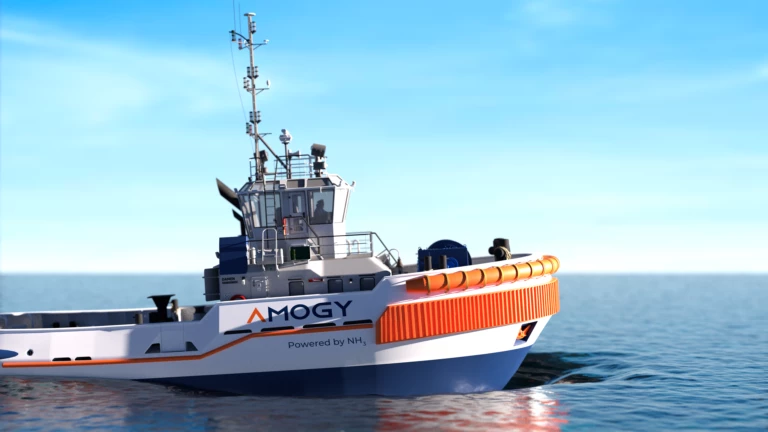Having already rolled out the world's first ammonia-fueled tractor and the world's first ammonia-fueled semi truck, Brooklyn company Amogy has now got hold of a 1957 tugboat, and plans to have the world's first ammonia-powered ship sailing this year.
The tug already has an electric drive system; it was originally fitted with diesel generators and electric motors. Amogy will be retrofitting a 1-MW ammonia generator instead, three times bigger than the one on the semi.
The technology remains the same at this point; Amogy seems to have future plans for using ammonia as a combustion fuel in the marine sector, but for this project it'll be using a cracking reactor to split ammonia into hydrogen and nitrogen, then running the hydrogen through a fuel cell to create electricity and feed the electric motors.
Green ammonia, produced using green hydrogen, is a promising clean fuel for sectors that otherwise look hard, or even impossible, to decarbonize – areas like shipping, where massive amounts of energy are required, batteries are too heavy and bulky, and gaseous or cryogenic liquid hydrogen is too difficult to handle. Ammonia is a relatively dense way of transporting clean energy, and although it only carries half the energy of an equivalent amount of diesel, that's about as good as things get without emitting CO2.
Amogy had best get its skates on if it wants to take out world-first honors; Australia's Fortescue Future Industries bought a 246-ft (75-m) fluid-carrying vessel back in 2021, and said at the time it'd have it up and running on ammonia sometime last year. This is yet to eventuate, but Norwegian company Eidesvik and Fraunhofer are also working on another ammonia ship called the Viking Energy, which is slated to launch this year.
These are important projects; ammonia is one of the world's most common industrial and agricultural chemicals, but it's yet to prove itself as a practical bulk fuel for transport use, and questions remain about whether it's safe, or environmentally responsible, to use it to power large ships given that it's highly caustic and liable to cause significant hazards in a large-scale spill. These pioneering conversions seek to test and prove it as an entire fuel ecosystem.
Source: Amogy





